8F2 Mathematics
Section outline
-

Welcome to Year 8 Math. I hope you have had a wonderful break and are ready to adventure with me on an exciting year exploring the world of mathematics.
My name is Mr Kumar.
A kaitiaki is a guardian. The process and practices of protecting/looking after the environment are known as kaitiakitanga. The ‘Kaitiakitanga’ learning journey sees Ngahere engaging in a place-based, inquiry-led, and ‘participation for change’ focused opportunity. Year 8 students will snorkel in the Goat Island Marine Reserve with qualified instructors and visit the Goat Island Marine Discovery Centre. The focus is on understanding what ‘Kaitiakitanga’ means and developing a publication to promote community action.
The rocky shore perspective exposes students to a variety of learning experiences - from water safety (always a hot topic in New Zealand), to learning about unique species living in our waters - identifying species, understanding habitats and survival, tides, adaptations, classifications, etc.
Authentic outcomes include:
Snorkeling at Goat Island Marine Reserve
Hands-on learning at the Goat Island Marine Discovery Centre
- Acting local beach clean-up (for example) and poster to promote participation for change.
Homework
MathsBuddy exercise
-
Kia ora 8F2's...
EXPLORE / TŪHURA learning intentions:
- We are EXPLORING...statistics of sea life by analysing how to read and draw graphs.
- We are EXPLORING...statistics of sea life by recognising that there are different types of graphs.
- We are EXPLORING...statistics of sea life by calculating the averages of sets of values
MHJC Great Learner Life Long Learner / Wänanga: GREAT Ako

MHJC Great Learner Life Long Learner / Wänanga: Active Learner
Paearu Angitu / Success Criteria: I can/have...
- I can recognise and name different types of graphs
- I can use a tally chart to draw a bar graph
- 100 numbers game in order to learn how we should be working together in a group
- analysing graphs that other people have made and making inferences from them
Mahi Kāinga / Homework:
Do now: Numeracy Ninjas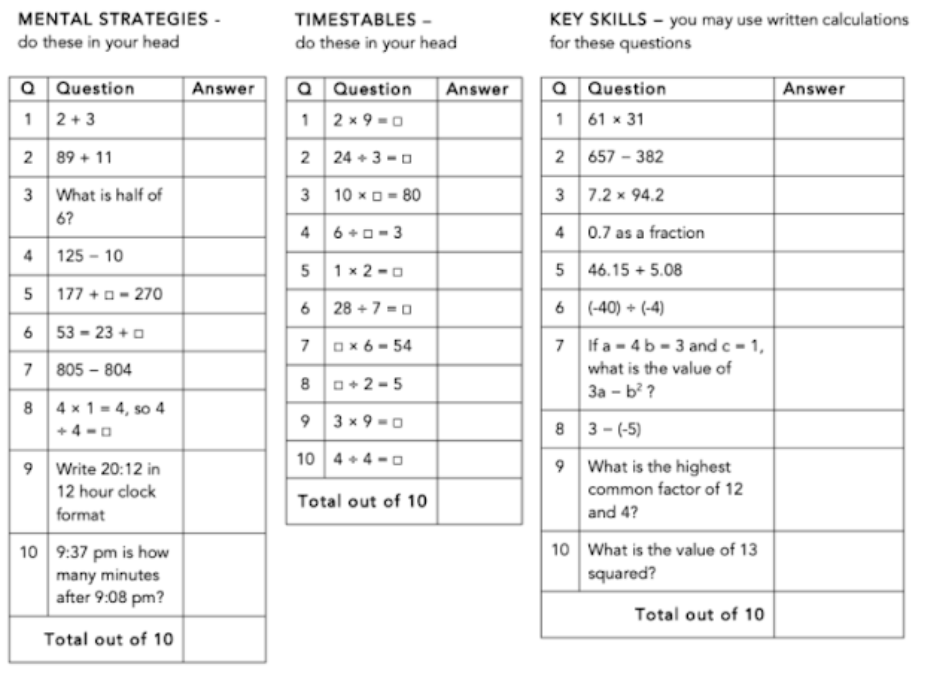
-
EXPLORE / TŪHURA learning intentions:
- We are EXPLORING...statistics of sea life by analysing how to read and draw graphs.
- We are EXPLORING...statistics of sea life by recognising that there are different types of graphs.
- We are EXPLORING...statistics of sea life by calculating the averages of sets of values
MHJC Great Learner Life Long Learner / Wänanga: GREAT Ako

MHJC Great Learner Life Long Learner / Wänanga: Active Learner
Paearu Angitu / Success Criteria: I can/have...
- I can organise and divide numbers to find the ‘mean’
- Locate the middle number to find the ‘median’
- Recognise that in some cases I need to find the average of two to get the median
- Analysing graphs that other people have made and making inferences from them
Mahi Kāinga / Homework: Maths Buddy
Do now
Numeracy-Ninjas-Skill
-
EXPLORE / TŪHURA learning intentions:
- We are EXPLORING...statistics of sea life by analysing how to read and draw graphs.
- We are EXPLORING...statistics of sea life by recognising that there are different types of graphs.
- We are EXPLORING...statistics of sea life by calculating the averages of sets of values
MHJC Great Learner Life Long Learner / Wänanga: GREAT Ako

MHJC Great Learner Life Long Learner / Wänanga: Active Learner
Paearu Angitu / Success Criteria: I can/have...
- I can organise and divide numbers to find the ‘mean’
- Locate the middle number to find the ‘median’
- Recognise that in some cases I need to find the average of two to get the median
- Analysing graphs that other people have made and making inferences from them
Do now: Read - School Journal Article - Marine Reserves
https://drive.google.com/file/d/1XSywnF6RKrCx6cK2CaT6chvT86bEUjKE/view?usp=drive_link
-
EXPLORE / TŪHURA learning intentions:
- We are EXPLORING...statistics of sea life by analysing how to read and draw graphs.
- We are EXPLORING...statistics of sea life by recognising that there are different types of graphs.
- We are EXPLORING...statistics of sea life by calculating the averages of sets of values
Success Criteria:MHJC Great Learner Life Long Learner / Wänanga: GREAT Ako

MHJC Great Learner Life Long Learner / Wänanga: Active Learner
- I can read a line graph and extract the relevant information
Activities:- Giants of the sea worksheet 1 on Google Classroom
Do Now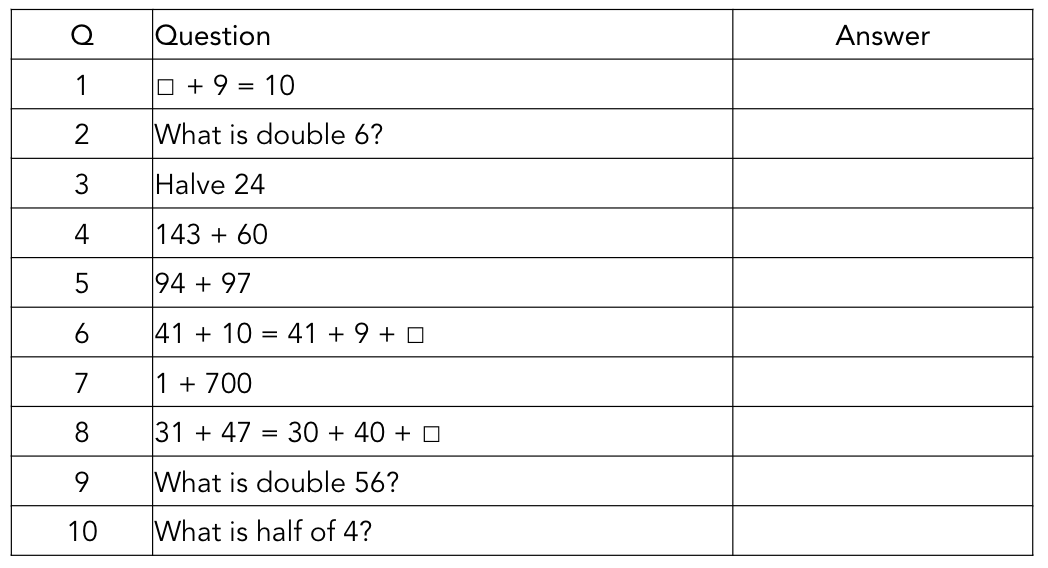
-
FOCUS / ARONGA learning intentions:
- We are FOCUSING...on identifying the types of graphs needed for different sets of data
- We are FOCUSING...drawing bar graphs, dot plots, and box and whisker graphs
MHJC Great Learner Life Long Learner / Wänanga: GREAT Ako

MHJC Great Learner Life Long Learner / Wänanga: Active Learner
Enter text here...
FOCUS / ARONGA learning intentions:- We are FOCUSING on the statistics of blue whales by identifying features of graphs made by blue whale scientists
- We are FOCUSING on the statistics of blue whales by describing what the graph features mean for blue whales and their conservation
Success Criteria:- I can read a line graph and extract the relevant information
Giants of the sea worksheet 2 on Google Classroom
Do now: https://mathsstarters.net/quickquiz -
FOCUS / ARONGA learning intentions:
- We are FOCUSING...on identifying the types of graphs needed for different sets of data
- We are FOCUSING...drawing bar graphs, dot plots, histograms, stem and leaf graph
MHJC Great Learner Life Long Learner / Wänanga: GREAT Ako

MHJC Great Learner Life Long Learner / Wänanga: Active Learner
FOCUS / ARONGA learning intentions:
- We are FOCUSING on statistics by solving how to draw bar graphs, dot plots, histograms, stem and leaf graph
Success Criteria:- I can calculate the median from a set of data
- I can calculate upper and lower quartiles
- I can calculate interquartile range
- I can draw bar graphs, dot plots, histograms, stem and leaf graph from a set of data using the above values
Activities:- drawing bar graphs, dot plots, histograms, stem and leaf graph from our class data
- Maths Buddy Tasks
Resource - Google classroom

-
PLAN & DO / WHAKAMAHI learning intentions:
- We are PLANNING on writing a statistics report on sea life so that we can identify ways that we can help our Aotearoa sea life.
Success Criteria:
- I can think of a problem relating to shark populations
- I can calculate the mean from a set of data
- I can calculate median, mode and range
- I can draw a stem and leaf plot
- I can draw a Line Graph
- I can write a statistical conclusion
- completing Assessment 1
-
Opened: Monday, 18 March 2024, 12:00 AMDue: Thursday, 28 March 2024, 7:00 PM
-
PLAN & DO / WHAKAMAHI learning intentions:
- We are PLANNING on writing a statistics report on sea life so that we can help our Aotearoa sea life.
- I can think of a problem relating to shark populations
- I can calculate the mean from a set of data
- I can calculate median, mode and range
- I can draw a stem and leaf plot
- I can draw a Line Graph
- I can write a statistical conclusion
- completing Assessment 1
-
REFLECT / WHAIWHAKAARO learning intentions:
- We are REFLECTING on the things we have learned about statistics by solving group problems involving statistics
Wänanga: Active Learner
Ako: Learning and Thinking Strategy

Success Criteria:
- I can use problem solving and communication skills to investigate and solve problems
Activities:
- four triangles puzzle
- bryony’s triangle
- ice cream scoop
-
REFLECT / WHAIWHAKAARO learning intentions:
- We are REFLECTING on the things we have learned about statistics by solving group problems involving statistics
Wänanga: Active Learner
Ako: Learning and Thinking Strategy

Success Criteria:
- I can use problem solving and communication skills to investigate and solve problems
Activities:
- four triangles puzzle
- bryony’s triangle
- ice cream scoop
-
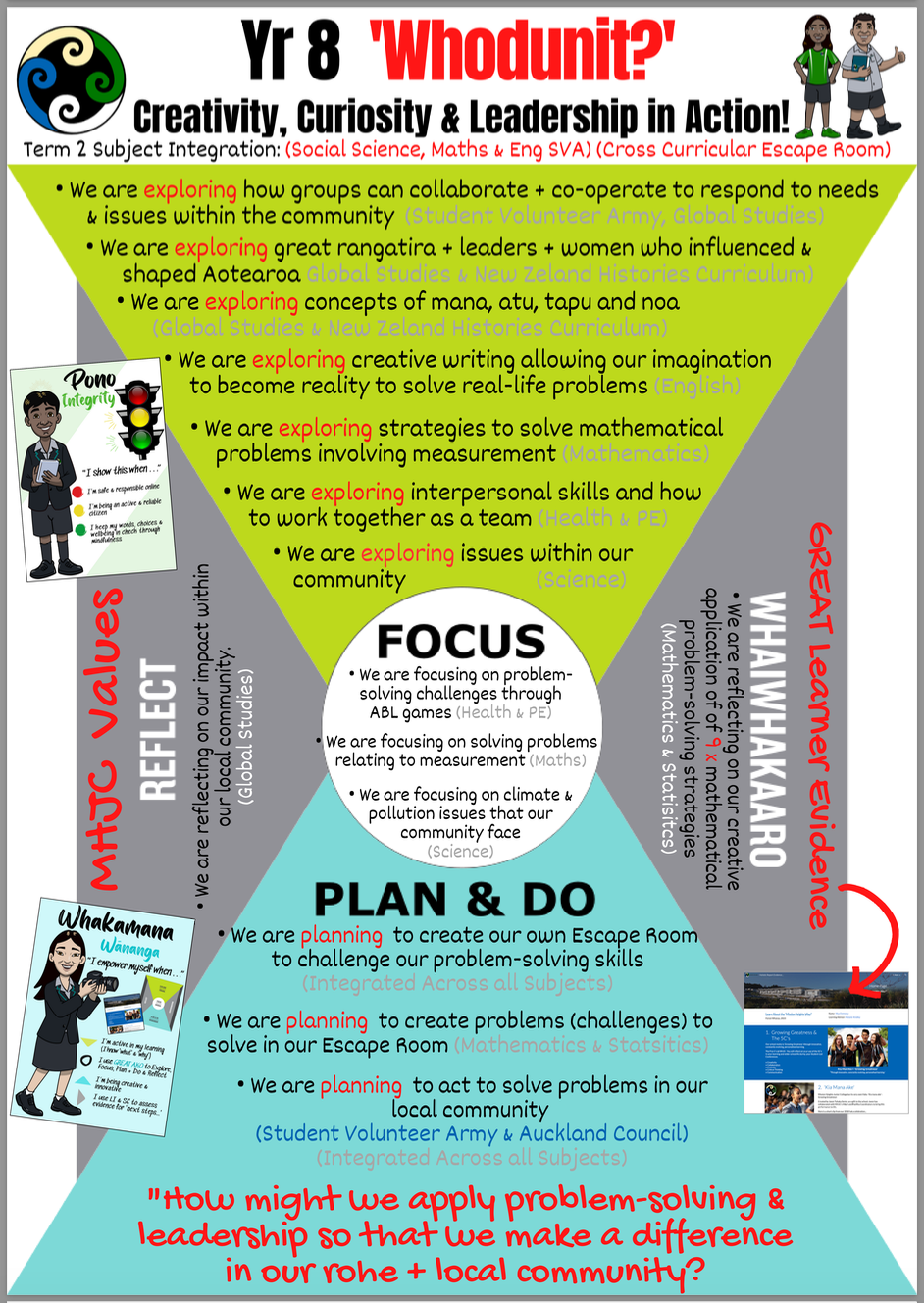
EXPLORE / TŪHURA learning intentions:
- We are EXPLORING number operations in context to support Stage One of our MHJC Numeracy Certificate
- We are EXPLORING a range of strategies to solve real-world problems
PLAN & DO / WHAKAMAHI learning intentions:
- We are APPLYING number operations to complete Stage One of our Numeracy Certificate
- We are APPLYING mathematical problem-solving strategies to solve real-world problems

Authentic Outcomes: Developing an Escape Room Challenge
Theme: Resilience/empowerment/perseverance
Whakatauki: "I orea te tuatara ka patu ki waho."
Metaphorical: A problem is solved by continuing to find solutions
Literal: This whakatauki refers to the need for creative thinking, adaptability and perseverance. In order to solve a problem you need to have all of these.Success Criteria: I can...
Mathematical Problem Solving
• Name and apply different problem-solving strategies

Class Activities: Number
1. Issue class Numeracy Certificates.
2. Complete Ludi basic facts speed test. Issue stickers for 1:1 and 2:1 once passed the 'Emerging' and 'Basic' levels.
3. Work through question banks 1:2. 1:3, 1:4 to 1:8 aiming for 95% or higher to earn a sticker on your Stage One of your Numeracy Certificate.
4. Whanau Monitors will record your name on our Whanau spreadsheet on Wednesdays when you complete a Stage (8 stickers) and assign an eBadge on your Holistic Report.
5. Miss Kindley or Mrs Phadke will assign Stage Two on Maths Buddy to students who have passed all 8 tasks at Stage One.
6. Record and underline the short date with a ruler and record the session's Learning Intention at the front of your maths exercise books. Please write in pencil, and rule/underline and mark with red pen.
7. In-class discussion and demonstration with the Teacher.
Mathematical Problem Solving
Fast finishers can work on their Maths Buddy reinforcement activities.
8. Mark exercise bookwork, in groups.
9. Reflect on your understanding and effort, in your ' Maths Evaluation '.
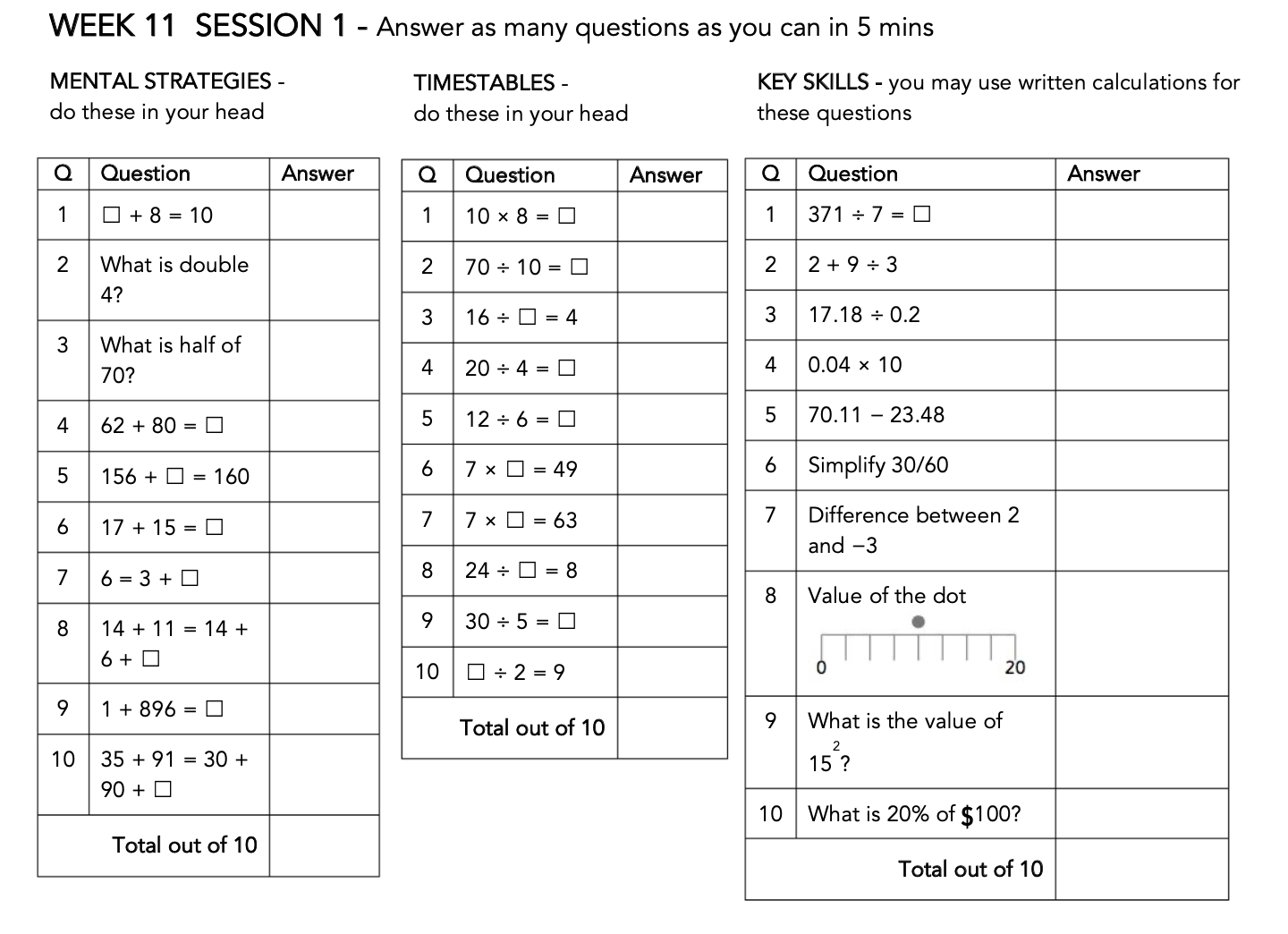
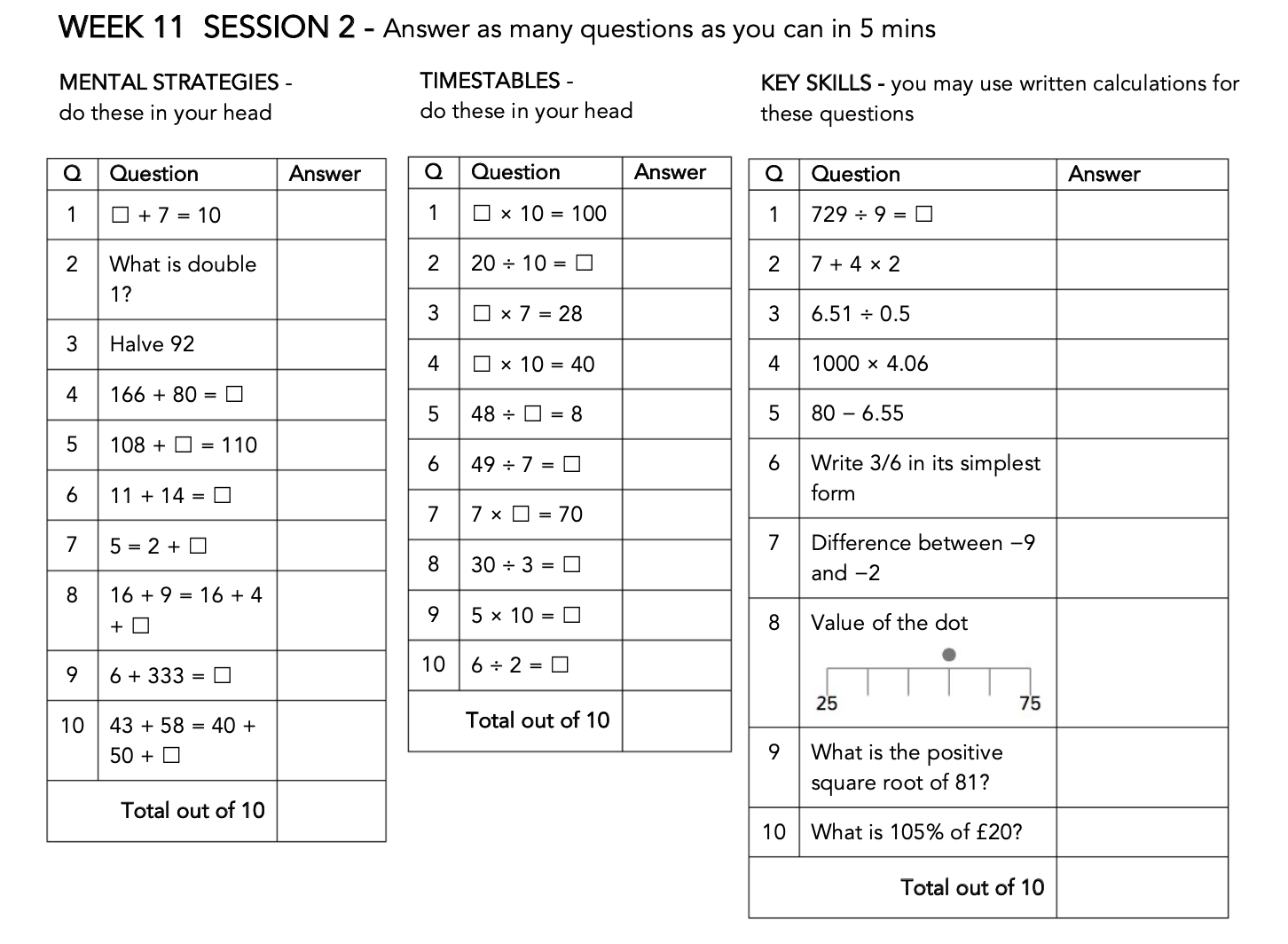
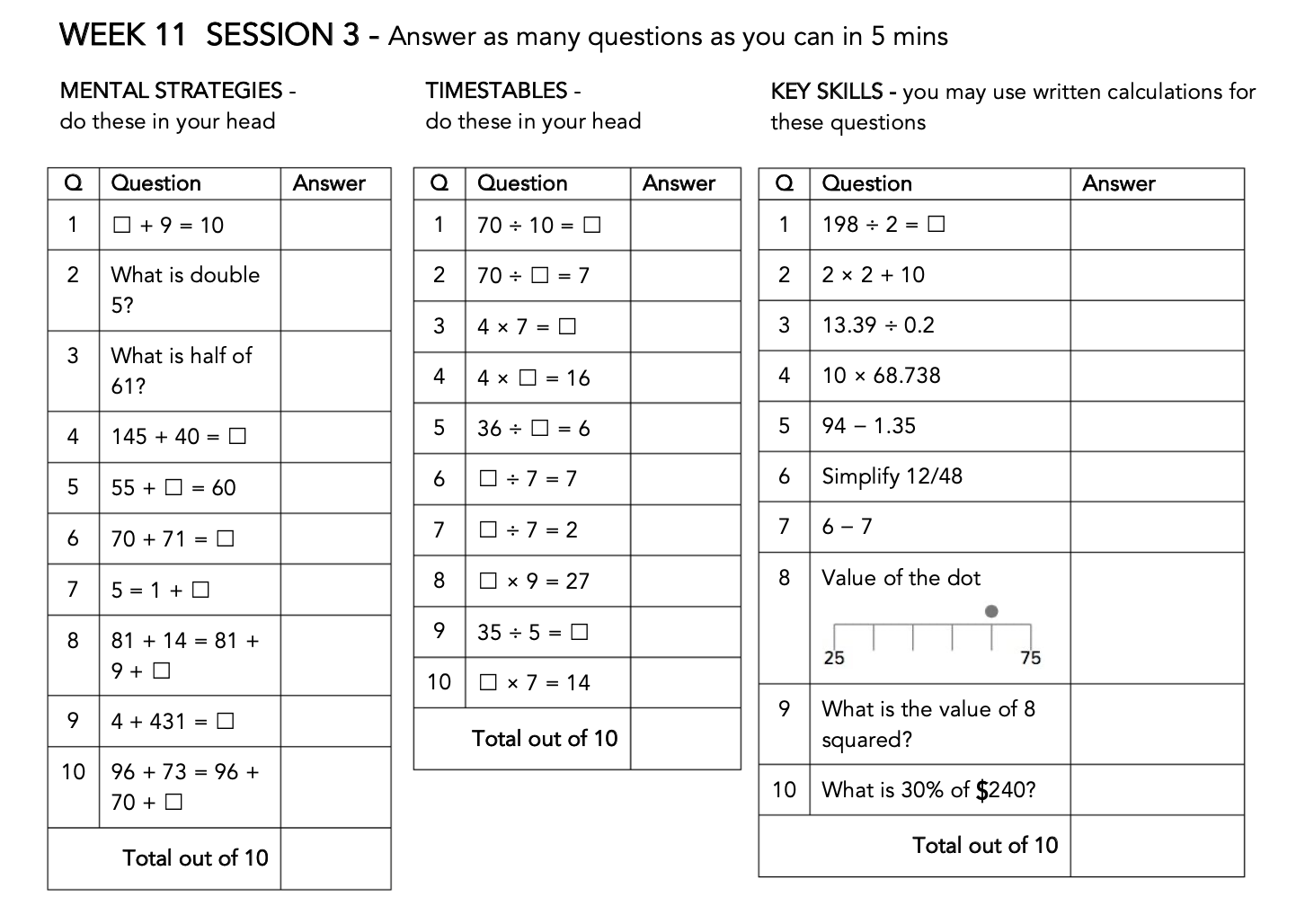
Homework:
Maths Buddy is your priority for your at-home practice. Please complete your set homework tasks by Friday at 9:30am (Forest's homework routine has now changed to 'Due on Fridays & re-issued on Fridays' to allow you more time). If you have completed your assigned activities please do extra practice on your 'Ludi' timetables programme and complete your Numeracy Certificate tasks.
Here's my suggestion re: how to effectively distribute your weekly homework responsibilities this week...
Mondays: 2 x Maths Buddy Tasks and 1 x See Reader
Tuesdays: 2 x Maths Buddy Tasks and 1 x See Reader
Wednesdays: 2 x Maths Buddy Tasks, 1 x See Reader during Wananga Wednesday and 1 x iBalance plus 1 x Read Around at home
Thursdays: 2 x Maths Buddy Task, 1 x See Reader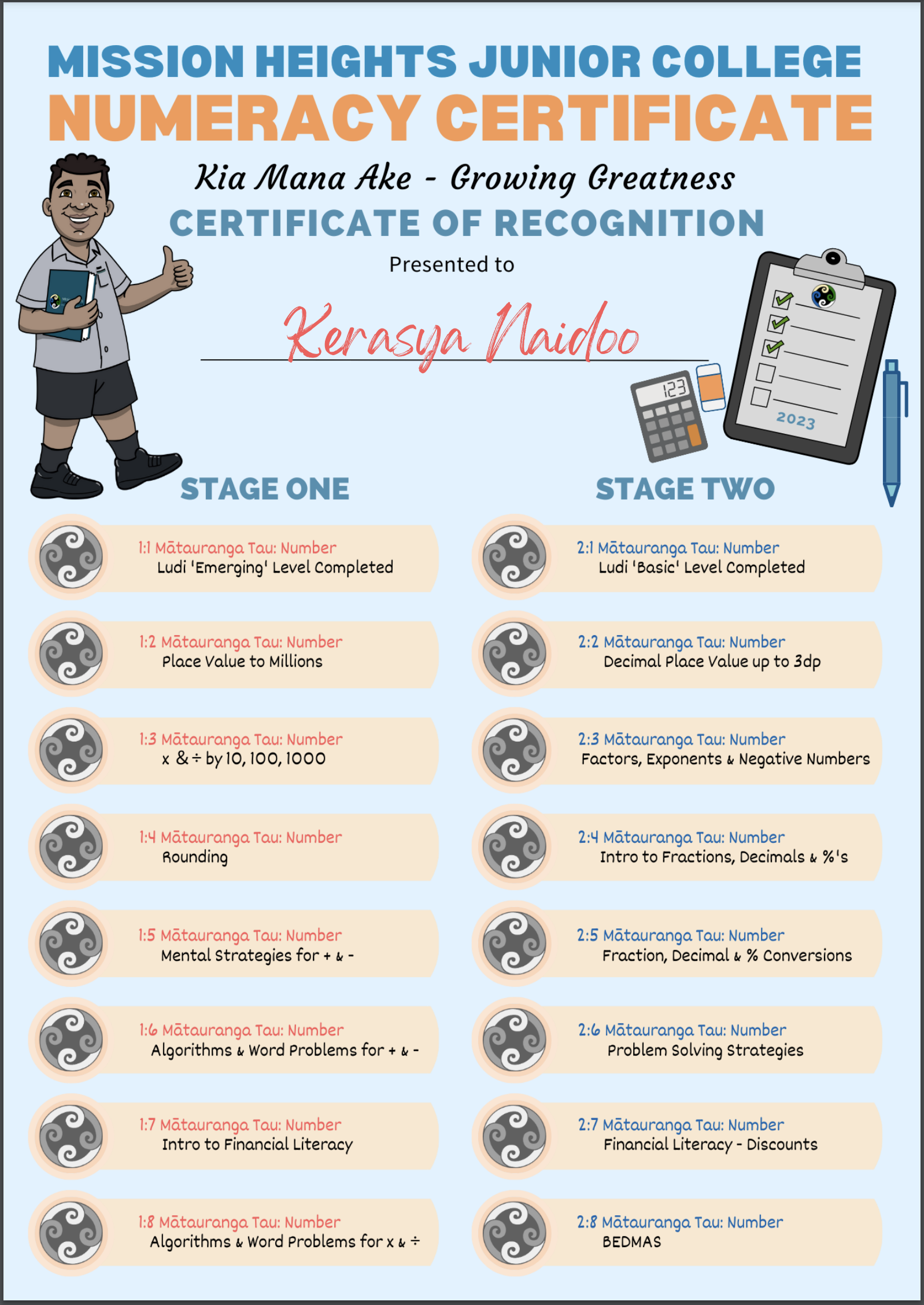


-
EXPLORE / TŪHURA learning intentions:
- We are EXPLORING number operations in context to support Stage One of our MHJC Numeracy Certificate
- We are EXPLORING a range of strategies to solve real-world problems
PLAN & DO / WHAKAMAHI learning intentions:
- We are APPLYING number operations to complete Stage One of our Numeracy Certificate
- We are APPLYING mathematical problem-solving strategies to solve real-world problems
Theme: Resilience/empowerment/perseverance
Whakatauki: "I orea te tuatara ka patu ki waho."
Metaphorical: A problem is solved by continuing to find solutions
Literal: This whakatauki refers to the need for creative thinking, adaptability and perseverance. In order to solve a problem you need to have all of these.Success Criteria: I can...
Mathematical Problem Solving
• Name and apply different problem-solving strategies
Class Activities: Number
1. Issue class Numeracy Certificates.
2. Whanau Monitors will record your name on our Whanau spreadsheet on Wednesdays when you complete a Stage (8 stickers) and assign an eBadge on your Holistic Report.
5. Miss Kindley or Mrs Phadke will assign Numeracy on Maths Buddy to students who have passed all 8 tasks at Stage One.
6. Record and underline the short date with a ruler and record the session's Learning Intention at the front of your maths exercise books. Please write in pencil, and rule/underline and mark with red pen.
7. In-class discussion and demonstration with the Teacher.
Mathematical Problem Solving
Fast finishers can work on their Maths Buddy reinforcement activities.
8. Mark exercise bookwork, in groups.
9. Reflect on your understanding and effort, in your ' Maths Evaluation '.Do now:
Homework:
Maths Buddy is your priority for your at-home practice. Please complete your set homework tasks by Friday at 9:30am (Forest's homework routine has now changed to 'Due on Fridays & re-issued on Fridays' to allow you more time). If you have completed your assigned activities please do extra practice on your 'Ludi' timetables programme and complete your Numeracy Certificate tasks.
Here's my suggestion re: how to effectively distribute your weekly homework responsibilities this week...
Mondays: 2 x Maths Buddy Tasks
Tuesdays: 2 x Maths Buddy Tasks
Wednesdays: 2 x Maths Buddy Tasks
Thursdays: 2 x Maths Buddy Tasks -
EXPLORE / TŪHURA learning intentions:
- We are EXPLORING number operations in context to support Stage One of our MHJC Numeracy Certificate
- We are EXPLORING a range of strategies to solve real-world problems
PLAN & DO / WHAKAMAHI learning intentions:
- We are APPLYING number operations to complete Stage One of our Numeracy Certificate
- We are APPLYING mathematical problem-solving strategies to solve real-world problems
Theme: Resilience/empowerment/perseverance
Whakatauki: "I orea te tuatara ka patu ki waho."
Metaphorical: A problem is solved by continuing to find solutions
Literal: This whakatauki refers to the need for creative thinking, adaptability and perseverance. In order to solve a problem you need to have all of these.Success Criteria: I can...
Mathematical Problem Solving
• Name and apply different problem-solving strategies
Class Activities: Number
1. Issue class Numeracy Certificates.
2. Whanau Monitors will record your name on our Whanau spreadsheet on Wednesdays when you complete a Stage (8 stickers) and assign an eBadge on your Holistic Report.
5. Miss Kindley or Mrs Phadke will assign Numeracy on Maths Buddy to students who have passed all 8 tasks at Stage One.
6. Record and underline the short date with a ruler and record the session's Learning Intention at the front of your maths exercise books. Please write in pencil, and rule/underline and mark with red pen.
7. In-class discussion and demonstration with the Teacher.
Mathematical Problem Solving
Fast finishers can work on their Maths Buddy reinforcement activities.
8. Mark exercise bookwork, in groups.
9. Reflect on your understanding and effort, in your ' Maths Evaluation '.Do now:
Homework:
Maths Buddy is your priority for your at-home practice. Please complete your set homework tasks by Friday at 9:30am (Forest's homework routine has now changed to 'Due on Fridays & re-issued on Fridays' to allow you more time). If you have completed your assigned activities please do extra practice on your 'Ludi' timetables programme and complete your Numeracy Certificate tasks.
Here's my suggestion re: how to effectively distribute your weekly homework responsibilities this week...
Mondays: 2 x Maths Buddy Tasks
Tuesdays: 2 x Maths Buddy Tasks
Wednesdays: 2 x Maths Buddy Tasks
Thursdays: 2 x Maths Buddy Tasks -
EXPLORE / TŪHURA learning intentions:
- We are EXPLORING number operations in context to support Stage One of our MHJC Numeracy Certificate
- We are EXPLORING a range of strategies to solve real-world problems
PLAN & DO / WHAKAMAHI learning intentions:
- We are APPLYING number operations to complete Stage One of our Numeracy Certificate
- We are APPLYING mathematical problem-solving strategies to solve real-world problems
Theme: Resilience/empowerment/perseverance
Whakatauki: "I orea te tuatara ka patu ki waho."
Metaphorical: A problem is solved by continuing to find solutions
Literal: This whakatauki refers to the need for creative thinking, adaptability and perseverance. In order to solve a problem you need to have all of these.Success Criteria: I can...
Mathematical Problem Solving
• Name and apply different problem-solving strategies
Class Activities: Number
1. Issue class Numeracy Certificates.
2. Whanau Monitors will record your name on our Whanau spreadsheet on Wednesdays when you complete a Stage (8 stickers) and assign an eBadge on your Holistic Report.
5. Miss Kindley or Mrs Phadke will assign Numeracy on Maths Buddy to students who have passed all 8 tasks at Stage One.
6. Record and underline the short date with a ruler and record the session's Learning Intention at the front of your maths exercise books. Please write in pencil, and rule/underline and mark with red pen.
7. In-class discussion and demonstration with the Teacher.
Mathematical Problem Solving
Fast finishers can work on their Maths Buddy reinforcement activities.
8. Mark exercise bookwork, in groups.
9. Reflect on your understanding and effort, in your ' Maths Evaluation '.Do now:
Homework:
Maths Buddy is your priority for your at-home practice. Please complete your set homework tasks by Friday at 9:30am (Forest's homework routine has now changed to 'Due on Fridays & re-issued on Fridays' to allow you more time). If you have completed your assigned activities please do extra practice on your 'Ludi' timetables programme and complete your Numeracy Certificate tasks.
Here's my suggestion re: how to effectively distribute your weekly homework responsibilities this week...
Mondays: 2 x Maths Buddy Tasks
Tuesdays: 2 x Maths Buddy Tasks
Wednesdays: 2 x Maths Buddy Tasks
Thursdays: 2 x Maths Buddy Tasks -
EXPLORE / TŪHURA learning intentions:
- We are EXPLORING number operations in context to support Stage One of our MHJC Numeracy Certificate
- We are EXPLORING a range of strategies to solve real-world problems
PLAN & DO / WHAKAMAHI learning intentions:
- We are APPLYING number operations to complete Stage One of our Numeracy Certificate
- We are APPLYING mathematical problem-solving strategies to solve real-world problems
Theme: Resilience/empowerment/perseverance
Whakatauki: "I orea te tuatara ka patu ki waho."
Metaphorical: A problem is solved by continuing to find solutions
Literal: This whakatauki refers to the need for creative thinking, adaptability and perseverance. In order to solve a problem you need to have all of these.Success Criteria: I can...
Mathematical Problem Solving
• Name and apply different problem-solving strategies
Class Activities: Number
1. Issue class Numeracy Certificates.
2. Whanau Monitors will record your name on our Whanau spreadsheet on Wednesdays when you complete a Stage (8 stickers) and assign an eBadge on your Holistic Report.
5. Miss Kindley or Mrs Phadke will assign Numeracy on Maths Buddy to students who have passed all 8 tasks at Stage One.
6. Record and underline the short date with a ruler and record the session's Learning Intention at the front of your maths exercise books. Please write in pencil, and rule/underline and mark with red pen.
7. In-class discussion and demonstration with the Teacher.
Mathematical Problem Solving
Fast finishers can work on their Maths Buddy reinforcement activities.
8. Mark exercise bookwork, in groups.
9. Reflect on your understanding and effort, in your ' Maths Evaluation '.Do now:
Homework:
Maths Buddy is your priority for your at-home practice. Please complete your set homework tasks by Friday at 9:30am (Forest's homework routine has now changed to 'Due on Fridays & re-issued on Fridays' to allow you more time). If you have completed your assigned activities please do extra practice on your 'Ludi' timetables programme and complete your Numeracy Certificate tasks.
Here's my suggestion re: how to effectively distribute your weekly homework responsibilities this week...
Mondays: 2 x Maths Buddy Tasks
Tuesdays: 2 x Maths Buddy Tasks
Wednesdays: 2 x Maths Buddy Tasks
Thursdays: 2 x Maths Buddy Tasks -
EXPLORE / TŪHURA learning intentions:
- We are EXPLORING number operations in context to support Stage One of our MHJC Numeracy Certificate
- We are EXPLORING a range of strategies to solve real-world problems
PLAN & DO / WHAKAMAHI learning intentions:
- We are APPLYING number operations to complete Stage One of our Numeracy Certificate
- We are APPLYING mathematical problem-solving strategies to solve real-world problems
Theme: Resilience/empowerment/perseverance
Whakatauki: "I orea te tuatara ka patu ki waho."
Metaphorical: A problem is solved by continuing to find solutions
Literal: This whakatauki refers to the need for creative thinking, adaptability and perseverance. In order to solve a problem you need to have all of these.Success Criteria: I can...
Mathematical Problem Solving
• Name and apply different problem-solving strategies
Class Activities: Number
1. Issue class Numeracy Certificates.
2. Whanau Monitors will record your name on our Whanau spreadsheet on Wednesdays when you complete a Stage (8 stickers) and assign an eBadge on your Holistic Report.
5. Miss Kindley or Mrs Phadke will assign Numeracy on Maths Buddy to students who have passed all 8 tasks at Stage One.
6. Record and underline the short date with a ruler and record the session's Learning Intention at the front of your maths exercise books. Please write in pencil, and rule/underline and mark with red pen.
7. In-class discussion and demonstration with the Teacher.
Mathematical Problem Solving
Fast finishers can work on their Maths Buddy reinforcement activities.
8. Mark exercise bookwork, in groups.
9. Reflect on your understanding and effort, in your ' Maths Evaluation '.Do now:
Homework:
Maths Buddy is your priority for your at-home practice. Please complete your set homework tasks by Friday at 9:30am (Forest's homework routine has now changed to 'Due on Fridays & re-issued on Fridays' to allow you more time). If you have completed your assigned activities please do extra practice on your 'Ludi' timetables programme and complete your Numeracy Certificate tasks.
Here's my suggestion re: how to effectively distribute your weekly homework responsibilities this week...
Mondays: 2 x Maths Buddy Tasks
Tuesdays: 2 x Maths Buddy Tasks
Wednesdays: 2 x Maths Buddy Tasks
Thursdays: 2 x Maths Buddy Tasks -
EXPLORE / TŪHURA learning intentions:
- We are EXPLORING number operations in context to support Stage One of our MHJC Numeracy Certificate
- We are EXPLORING a range of strategies to solve real-world problems
PLAN & DO / WHAKAMAHI learning intentions:
- We are APPLYING number operations to complete Stage One of our Numeracy Certificate
- We are APPLYING mathematical problem-solving strategies to solve real-world problems
Theme: Resilience/empowerment/perseverance
Whakatauki: "I orea te tuatara ka patu ki waho."
Metaphorical: A problem is solved by continuing to find solutions
Literal: This whakatauki refers to the need for creative thinking, adaptability and perseverance. In order to solve a problem you need to have all of these.Success Criteria: I can...
Mathematical Problem Solving
• Name and apply different problem-solving strategies
Class Activities: Number
1. Issue class Numeracy Certificates.
2. Whanau Monitors will record your name on our Whanau spreadsheet on Wednesdays when you complete a Stage (8 stickers) and assign an eBadge on your Holistic Report.
5. Miss Kindley or Mrs Phadke will assign Numeracy on Maths Buddy to students who have passed all 8 tasks at Stage One.
6. Record and underline the short date with a ruler and record the session's Learning Intention at the front of your maths exercise books. Please write in pencil, and rule/underline and mark with red pen.
7. In-class discussion and demonstration with the Teacher.
Mathematical Problem Solving
Fast finishers can work on their Maths Buddy reinforcement activities.
8. Mark exercise bookwork, in groups.
9. Reflect on your understanding and effort, in your ' Maths Evaluation '.Do now:
Homework:
Maths Buddy is your priority for your at-home practice. Please complete your set homework tasks by Friday at 9:30am (Forest's homework routine has now changed to 'Due on Fridays & re-issued on Fridays' to allow you more time). If you have completed your assigned activities please do extra practice on your 'Ludi' timetables programme and complete your Numeracy Certificate tasks.
Here's my suggestion re: how to effectively distribute your weekly homework responsibilities this week...
Mondays: 2 x Maths Buddy Tasks
Tuesdays: 2 x Maths Buddy Tasks
Wednesdays: 2 x Maths Buddy Tasks
Thursdays: 2 x Maths Buddy Tasks -
Wänanga: Active Learner
Ako: Learning and Thinking Strategy

EXPLORE / TŪHURA learning intentions:
- We are EXPLORING number operations in context to support Stage One of our MHJC Numeracy Certificate
- We are EXPLORING a range of strategies to solve real-world problems
PLAN & DO / WHAKAMAHI learning intentions:
- We are APPLYING number operations to complete Stage One of our Numeracy Certificate
- We are APPLYING mathematical problem-solving strategies to solve real-world problems
Theme: Resilience/empowerment/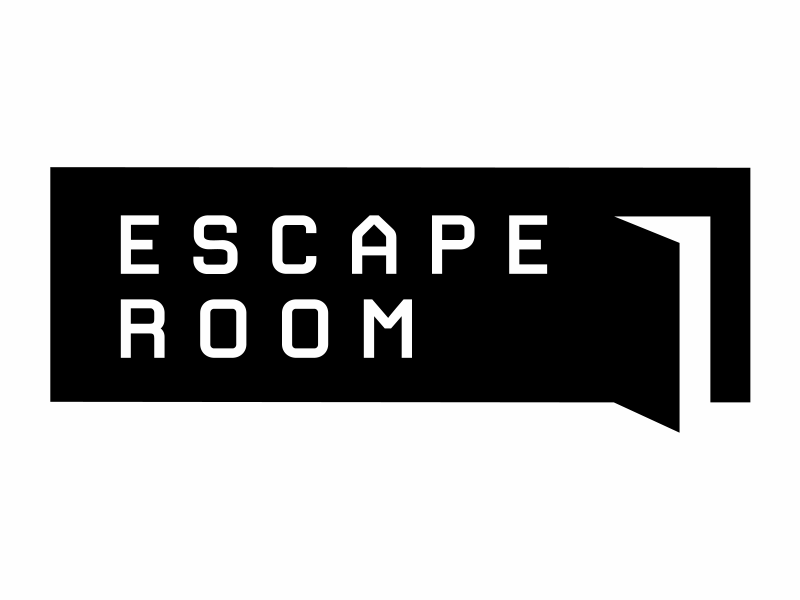
perseverance Whakatauki: "I orea te tuatara ka patu ki waho."
Metaphorical: A problem is solved by continuing to find solutions
Literal: This whakatauki refers to the need for creative thinking, adaptability and perseverance. In order to solve a problem you need to have all of these.Success Criteria: I can...
Mathematical Problem Solving
• Name and apply different problem-solving strategies
Class Activities: Number
1. Issue class Numeracy Certificates.
2. Whanau Monitors will record your name on our Whanau spreadsheet on Wednesdays when you complete a Stage (8 stickers) and assign an eBadge on your Holistic Report.
5. Miss Kindley or Mrs Phadke will assign Numeracy on Maths Buddy to students who have passed all 8 tasks at Stage One.
6. Record and underline the short date with a ruler and record the session's Learning Intention at the front of your maths exercise books. Please write in pencil, and rule/underline and mark with red pen.
7. In-class discussion and demonstration with the Teacher.
Mathematical Problem Solving
Fast finishers can work on their Maths Buddy reinforcement activities.
8. Mark exercise bookwork, in groups.
9. Reflect on your understanding and effort, in your ' Maths Evaluation '.Do now:
Homework:
Maths Buddy is your priority for your at-home practice. Please complete your set homework tasks by Friday at 9:30am (Forest's homework routine has now changed to 'Due on Fridays & re-issued on Fridays' to allow you more time). If you have completed your assigned activities please do extra practice on your 'Ludi' timetables programme and complete your Numeracy Certificate tasks.
Here's my suggestion re: how to effectively distribute your weekly homework responsibilities this week...
Mondays: 2 x Maths Buddy Tasks
Tuesdays: 2 x Maths Buddy Tasks
Wednesdays: 2 x Maths Buddy Tasks
Thursdays: 2 x Maths Buddy Tasks -
Wänanga: Active Learner
Ako: Learning and Thinking Strategy

EXPLORE / TŪHURA learning intentions:
- We are EXPLORING number operations in context to support Stage One of our MHJC Numeracy Certificate
- We are EXPLORING a range of strategies to solve real-world problems
PLAN & DO / WHAKAMAHI learning intentions:
- We are APPLYING number operations to complete Stage One of our Numeracy Certificate
- We are APPLYING mathematical problem-solving strategies to solve real-world problems
Theme: Resilience/empowerment/
perseverance
Whakatauki: "I orea te tuatara ka patu ki waho."
Metaphorical: A problem is solved by continuing to find solutions
Literal: This whakatauki refers to the need for creative thinking, adaptability and perseverance. In order to solve a problem you need to have all of these.Success Criteria: I can...
Mathematical Problem Solving
• Name and apply different problem-solving strategies
Class Activities: Number
1. Issue class Numeracy Certificates.
2. Whanau Monitors will record your name on our Whanau spreadsheet on Wednesdays when you complete a Stage (8 stickers) and assign an eBadge on your Holistic Report.
5. Miss Kindley or Mrs Phadke will assign Numeracy on Maths Buddy to students who have passed all 8 tasks at Stage One.
6. Record and underline the short date with a ruler and record the session's Learning Intention at the front of your maths exercise books. Please write in pencil, and rule/underline and mark with red pen.
7. In-class discussion and demonstration with the Teacher.
Mathematical Problem Solving
Fast finishers can work on their Maths Buddy reinforcement activities.
8. Mark exercise bookwork, in groups.
9. Reflect on your understanding and effort, in your ' Maths Evaluation '.Do now:
Homework:
Maths Buddy is your priority for your at-home practice. Please complete your set homework tasks by Friday at 9:30am (Forest's homework routine has now changed to 'Due on Fridays & re-issued on Fridays' to allow you more time). If you have completed your assigned activities please do extra practice on your 'Ludi' timetables programme and complete your Numeracy Certificate tasks.
Here's my suggestion re: how to effectively distribute your weekly homework responsibilities this week...
Mondays: 2 x Maths Buddy Tasks
Tuesdays: 2 x Maths Buddy Tasks
Wednesdays: 2 x Maths Buddy Tasks
Thursdays: 2 x Maths Buddy Tasks -
Wänanga: Active Learner
Ako: Learning and Thinking Strategy

EXPLORE / TŪHURA learning intentions:
- We are EXPLORING number operations in context to support Stage One of our MHJC Numeracy Certificate
- We are EXPLORING a range of strategies to solve real-world problems
PLAN & DO / WHAKAMAHI learning intentions:
- We are APPLYING number operations to complete Stage One of our Numeracy Certificate
- We are APPLYING mathematical problem-solving strategies to solve real-world problems
Theme: Resilience/empowerment/
perseverance
Whakatauki: "I orea te tuatara ka patu ki waho."
Metaphorical: A problem is solved by continuing to find solutions
Literal: This whakatauki refers to the need for creative thinking, adaptability and perseverance. In order to solve a problem you need to have all of these.Success Criteria: I can...
Mathematical Problem Solving
• Name and apply different problem-solving strategies
Class Activities: Number
1. Issue class Numeracy Certificates.
2. Whanau Monitors will record your name on our Whanau spreadsheet on Wednesdays when you complete a Stage (8 stickers) and assign an eBadge on your Holistic Report.
5. Miss Kindley or Mrs Phadke will assign Numeracy on Maths Buddy to students who have passed all 8 tasks at Stage One.
6. Record and underline the short date with a ruler and record the session's Learning Intention at the front of your maths exercise books. Please write in pencil, and rule/underline and mark with red pen.
7. In-class discussion and demonstration with the Teacher.
Mathematical Problem Solving
Fast finishers can work on their Maths Buddy reinforcement activities.
8. Mark exercise bookwork, in groups.
9. Reflect on your understanding and effort, in your ' Maths Evaluation '.Do now:
Homework:
Maths Buddy is your priority for your at-home practice. Please complete your set homework tasks by Friday at 9:30am (Forest's homework routine has now changed to 'Due on Fridays & re-issued on Fridays' to allow you more time). If you have completed your assigned activities please do extra practice on your 'Ludi' timetables programme and complete your Numeracy Certificate tasks.
Here's my suggestion re: how to effectively distribute your weekly homework responsibilities this week...
Mondays: 2 x Maths Buddy Tasks
Tuesdays: 2 x Maths Buddy Tasks
Wednesdays: 2 x Maths Buddy Tasks
Thursdays: 2 x Maths Buddy Tasks -
Kia ora,
Welcome back! This term, our main focus will be on learning measurement and scale concepts using the Olympics as our theme. The main topics we will cover are distance, perimeter, area, and volume. We will begin with perimeter. First, we will review the concepts and then solve some problem-solving questions related to Olympic sports.
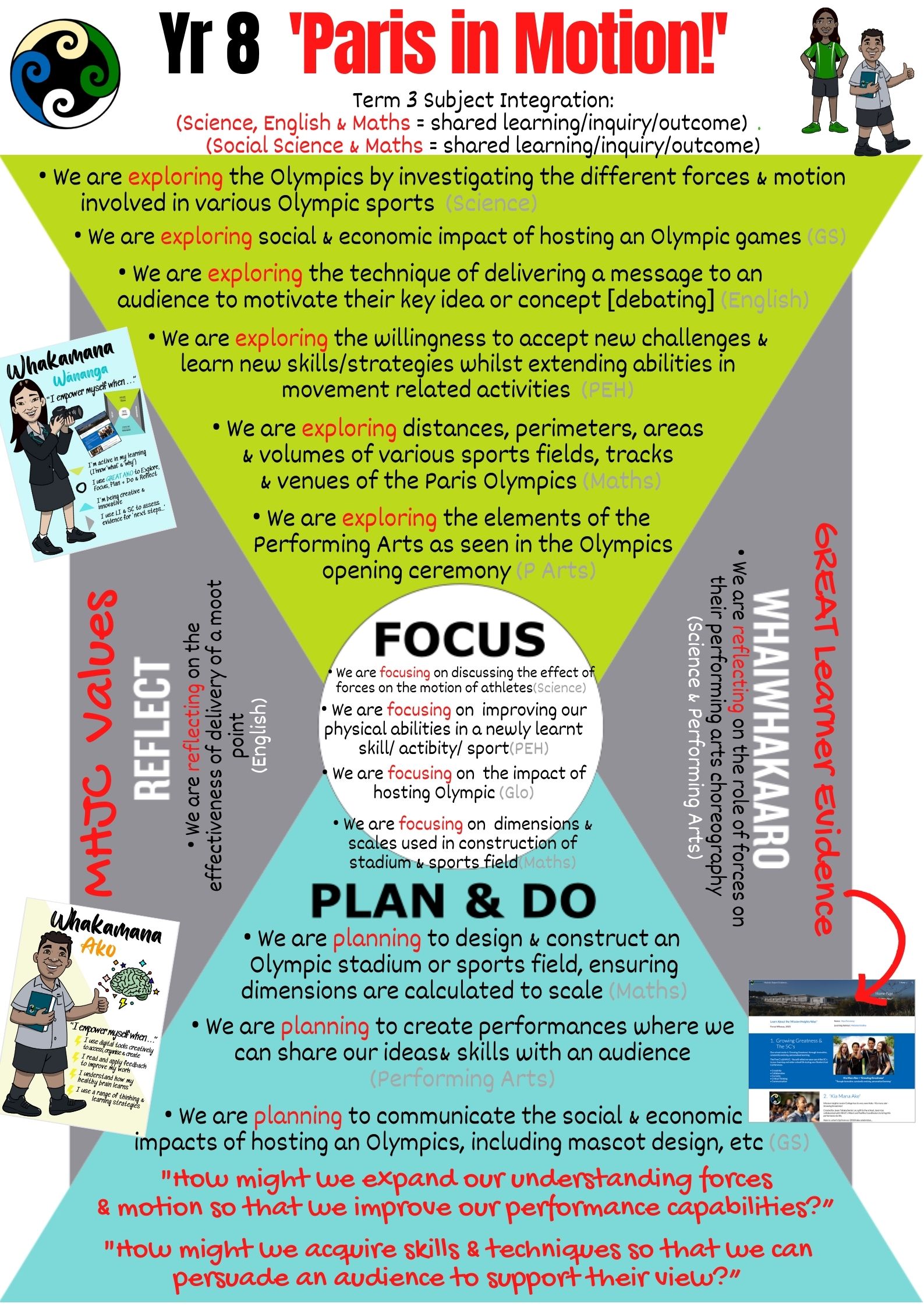
EXPLORE / TŪHURA learning intentions:
- We are EXPLORING number operations in context to support Stage One of our MHJC Numeracy Certificate.
- We are EXPLORING various sports fields, tracks, & sites of the Paris Olympics.
- We are EXPLORING perimeters, areas, and volumes of various sports fields, tracks, & sites of Paris Olympics.
• To design & construct an Olympic stadium or sports field, ensuring dimensions are calculated to scale.
Theme: Resilience/empowerment/perseverance
Whakatauki: "I orea te tuatara ka patu ki waho."
Metaphorical: A problem is solved by continuing to find solutions
Literal: This whakatauki refers to the need for creative thinking, adaptability and perseverance. In order to solve a problem you need to have all of these.Success Criteria: I can...
Mathematical Problem Solving- Find perimeter, area, and volume.
- Apply this knowledge in a real-life context, such as various sports fields, tracks, and sites of the Olympics.
- Read a scale and interpret real-life distances.
Class Activities: Area
Session 1: Introduction to the Olympics and its connection to math, Area of sports field and tracks.
Session 2: Continue with the activity.
Session 3: Problem-solving activity.1. Complete Numeracy Ninja Do Now challenge.
2. Record and underline the short date with a ruler and record the session's Learning Intention at the front of your maths exercise books. Please write in pencil, and rule/underline and mark with red pen.
3. After class discussion, complete the activity.
Fast finishers can work on their Maths Buddy reinforcement activities.
Homework:
Maths Buddy is your priority for your at-home practice. Please complete your set homework tasks by Friday at 9:30am (Forest's homework routine has now changed to 'Due on Fridays & re-issued on Fridays' to allow you more time). If you have completed your assigned activities please do extra practice on your 'Ludi' timetables programme and complete your Numeracy Certificate tasks.
Here's my suggestion re: how to effectively distribute your weekly homework responsibilities this week...
Mondays: 2 x Maths Buddy Tasks
Tuesdays: 2 x Maths Buddy Tasks
Wednesdays: 2 x Maths Buddy Tasks
Thursdays: 2 x Maths Buddy Tasks
-

EXPLORE / TŪHURA learning intentions:
- We are EXPLORING number operations in context to support Stage One of our MHJC Numeracy Certificate.
- We are EXPLORING various sports fields, tracks, & sites of the Paris Olympics.
- We are EXPLORING distances, perimeters, areas, and volumes of various sports fields, tracks, & sites of Paris Olympics.
• To design & construct an Olympic stadium or sports field, ensuring dimensions are calculated to scale.
Theme: Resilience/empowerment/perseverance
Whakatauki: "I orea te tuatara ka patu ki waho."
Metaphorical: A problem is solved by continuing to find solutions
Literal: This whakatauki refers to the need for creative thinking, adaptability and perseverance. In order to solve a problem you need to have all of these.Success Criteria: I can...
Mathematical Problem Solving
- Find distance, perimeter, area, and volume.
- Apply this knowledge in a real-life context, such as various sports fields, tracks, and sites of the Olympics.
- Read a scale and interpret real-life distances.
Class Activities: Area
Kia ora,
Welcome back! This term, our main focus will be on learning measurement and scale concepts using the Olympics as our theme. The main topics we will cover are distance, perimeter, area, and volume.
Session 1: Area of Rectangle and Squares
Session 2: Area of Rectangle and Squares
Session 3: Area of Rectangle and Squares
1. Complete Numeracy Ninja Do Now challenge.
2. Record and underline the short date with a ruler and record the session's Learning Intention at the front of your maths exercise books. Please write in pencil, and rule/underline and mark with red pen.
3. After class discussion, complete the activity.
Fast finishers can work on their Maths Buddy reinforcement activities.
Homework:
Maths Buddy is your priority for your at-home practice. Please complete your set homework tasks by Friday at 9:30am (Forest's homework routine has now changed to 'Due on Fridays & re-issued on Fridays' to allow you more time). If you have completed your assigned activities please do extra practice on your 'Ludi' timetables programme and complete your Numeracy Certificate tasks.
Here's my suggestion re: how to effectively distribute your weekly homework responsibilities this week...
Mondays: 2 x Maths Buddy Tasks
Tuesdays: 2 x Maths Buddy Tasks
Wednesdays: 2 x Maths Buddy Tasks
Thursdays: 2 x Maths Buddy Task -
EXPLORE / TŪHURA learning intentions:
- We are EXPLORING number operations in context to support Stage One of our MHJC Numeracy Certificate.
- We are EXPLORING various sports fields, tracks, & sites of the Paris Olympics.
- We are EXPLORING distances, perimeters, areas, and volumes of various sports fields, tracks, & sites of Paris Olympics.
Authentic Outcomes:• To design & construct an Olympic stadium or sports field, ensuring dimensions are calculated to scale.
Theme: Resilience/empowerment/perseverance
Whakatauki: "I orea te tuatara ka patu ki waho."
Metaphorical: A problem is solved by continuing to find solutions
Literal: This whakatauki refers to the need for creative thinking, adaptability and perseverance. In order to solve a problem you need to have all of these.Success Criteria: I can...
Mathematical Problem Solving
- Find distance, perimeter, area, and volume.
- Apply this knowledge in a real-life context, such as various sports fields, tracks, and sites of the Olympics.
- Read a scale and interpret real-life distances.
Class Activities: Area
Session 1: Area of Triangle
Session 2: Area of Triangle
Session 3: Area of Triangle
1. Complete Numeracy Ninja Do Now challenge.
2. Record and underline the short date with a ruler and record the session's Learning Intention at the front of your maths exercise books. Please write in pencil, and rule/underline and mark with red pen.
3. After class discussion, complete the activity.Fast finishers can work on their Maths Buddy reinforcement activities.
Homework:
Maths Buddy is your priority for your at-home practice. Please complete your set homework tasks by Friday at 9:30am (Forest's homework routine has now changed to 'Due on Fridays & re-issued on Fridays' to allow you more time). If you have completed your assigned activities please do extra practice on your 'Ludi' timetables programme and complete your Numeracy Certificate tasks.
Here's my suggestion re: how to effectively distribute your weekly homework responsibilities this week...
Mondays: 2 x Maths Buddy
Tuesdays: 2 x Maths Buddy
Wednesdays: 2 x Maths Buddy
Thursdays: 2 x Maths Buddy -

EXPLORE / TŪHURA learning intentions:
- We are EXPLORING number operations in context to support Stage One of our MHJC Numeracy Certificate.
- We are EXPLORING various sports fields, tracks, & sites of the Paris Olympics.
- We are EXPLORING distances, perimeters, areas, and volumes of various sports fields, tracks, & sites of Paris Olympics.
Authentic Outcomes:• To design & construct an Olympic stadium or sports field, ensuring dimensions are calculated to scale.
Theme: Resilience/empowerment/perseverance
Whakatauki: "I orea te tuatara ka patu ki waho."
Metaphorical: A problem is solved by continuing to find solutions
Literal: This whakatauki refers to the need for creative thinking, adaptability and perseverance. In order to solve a problem you need to have all of these.Success Criteria: I can...
Mathematical Problem Solving
- Find distance, perimeter, area, and volume.
- Apply this knowledge in a real-life context, such as various sports fields, tracks, and sites of the Olympics.
- Read a scale and interpret real-life distances.
Class Activities: Area
Session 1: Area of Parallelogram
Session 2: Area of Parallelogram
Session 3: Area of Parallelogram1. Complete Numeracy Ninja Do Now challenge.
2. Record and underline the short date with a ruler and record the session's Learning Intention at the front of your maths exercise books. Please write in pencil, and rule/underline and mark with red pen.
3. After class discussion, complete the activity.Fast finishers can work on their Maths Buddy reinforcement activities.
Homework:
Maths Buddy is your priority for your at-home practice. Please complete your set homework tasks by Friday at 9:30am (Forest's homework routine has now changed to 'Due on Fridays & re-issued on Fridays' to allow you more time). If you have completed your assigned activities please do extra practice on your 'Ludi' timetables programme and complete your Numeracy Certificate tasks.
Here's my suggestion re: how to effectively distribute your weekly homework responsibilities this week...
Mondays: 2 x Maths Buddy
Tuesdays: 2 x Maths Buddy
Wednesdays: 2 x Maths Buddy
Thursdays: 2 x Maths Buddy -
EXPLORE / TŪHURA learning intentions:
- We are EXPLORING number operations in context to support Stage One of our MHJC Numeracy Certificate.
- We are EXPLORING various sports fields, tracks, & sites of the Paris Olympics.
- We are EXPLORING distances, perimeters, areas, and volumes of various sports fields, tracks, & sites of Paris Olympics.
Authentic Outcomes:• To design & construct an Olympic stadium or sports field, ensuring dimensions are calculated to scale.
Theme: Resilience/empowerment/perseverance
Whakatauki: "I orea te tuatara ka patu ki waho."
Metaphorical: A problem is solved by continuing to find solutions
Literal: This whakatauki refers to the need for creative thinking, adaptability and perseverance. In order to solve a problem you need to have all of these.Success Criteria: I can...
Mathematical Problem Solving
- Find distance, perimeter, area, and volume.
- Apply this knowledge in a real-life context, such as various sports fields, tracks, and sites of the Olympics.
- Read a scale and interpret real-life distances.
Class Activities: Area & Circumference
Session 1: Area of Circle
Session 2: Area of Circle
Session 3: Circumference of Circle1. Complete Numeracy Ninja Do Now challenge.
2. Record and underline the short date with a ruler and record the session's Learning Intention at the front of your maths exercise books. Please write in pencil, and rule/underline and mark with red pen.
3. After class discussion, complete the activity.Fast finishers can work on their Maths Buddy reinforcement activities.
Homework:
Maths Buddy is your priority for your at-home practice. Please complete your set homework tasks by Friday at 9:30am (Forest's homework routine has now changed to 'Due on Fridays & re-issued on Fridays' to allow you more time). If you have completed your assigned activities please do extra practice on your 'Ludi' timetables programme and complete your Numeracy Certificate tasks.
Here's my suggestion re: how to effectively distribute your weekly homework responsibilities this week...
Mondays: 2 x Maths Buddy
Tuesdays: 2 x Maths Buddy
Wednesdays: 2 x Maths Buddy
Thursdays: 2 x Maths Buddy

-
EXPLORE / TŪHURA learning intentions:
- We are EXPLORING number operations in context to support Stage One of our MHJC Numeracy Certificate.
- We are EXPLORING various sports fields, tracks, & sites of the Paris Olympics.
- We are EXPLORING distances, perimeters, areas, and volumes of various sports fields, tracks, & sites of Paris Olympics.
Authentic Outcomes:• To design & construct an Olympic stadium or sports field, ensuring dimensions are calculated to scale.
Theme: Resilience/empowerment/perseverance
Whakatauki: "I orea te tuatara ka patu ki waho."
Metaphorical: A problem is solved by continuing to find solutions
Literal: This whakatauki refers to the need for creative thinking, adaptability and perseverance. In order to solve a problem you need to have all of these.Success Criteria: I can...
Mathematical Problem Solving
- Find distance, perimeter, area, and volume.
- Apply this knowledge in a real-life context, such as various sports fields, tracks, and sites of the Olympics.
- Read a scale and interpret real-life distances.
Class Activities: Area & Circumference
Session 1: Fraction of a circle
Session 2: Length of an arc
Session 3: Area of composite shapes1. Complete Numeracy Ninja Do Now challenge.
2. Record and underline the short date with a ruler and record the session's Learning Intention at the front of your maths exercise books. Please write in pencil, and rule/underline and mark with red pen.
3. After class discussion, complete the activity.Fast finishers can work on their Maths Buddy reinforcement activities.
Homework:
Maths Buddy is your priority for your at-home practice. Please complete your set homework tasks by Friday at 9:30am (Forest's homework routine has now changed to 'Due on Fridays & re-issued on Fridays' to allow you more time). If you have completed your assigned activities please do extra practice on your 'Ludi' timetables programme and complete your Numeracy Certificate tasks.
Here's my suggestion re: how to effectively distribute your weekly homework responsibilities this week...
Mondays: 2 x Maths Buddy
Tuesdays: 2 x Maths Buddy
Wednesdays: 2 x Maths Buddy
Thursdays: 2 x Maths Buddy -
EXPLORE / TŪHURA learning intentions:
- We are EXPLORING number operations in context to support Stage One of our MHJC Numeracy Certificate.
- We are EXPLORING various sports fields, tracks, & sites of the Paris Olympics.
- We are CALCULATING distances, perimeters, areas, and volumes of various sports fields, tracks, & sites of Paris Olympics.
- We are CALCULATING and reading a scale and interpreting real-life distances.
- We are DISCOVERING different sports fields, tracks, and sites of the Olympics - shapes of the sub-parts.
• To design & construct an Olympic stadium or sports field, ensuring dimensions are calculated to scale.
Theme: Resilience/empowerment/perseverance
Whakatauki: "I orea te tuatara ka patu ki waho."
Metaphorical: A problem is solved by continuing to find solutions
Literal: This whakatauki refers to the need for creative thinking, adaptability and perseverance. In order to solve a problem you need to have all of these.Success Criteria: I can...
Mathematical Problem Solving
- Find distance, perimeter, area, and volume.
- Apply this knowledge in a real-life context, such as various sports fields, tracks, and sites of the Olympics.
- Read a scale and interpret real-life distances.
Class Activities: Assessment 2
Kia ora,
This week, we will focus on our Assessment 2.
Session 1: Assessment 2 - Introduction and related resources
Session 2: Assessment 2 - Continue.
Session 3: Assessment 2 - Continue1. Complete Numeracy Ninja Do Now challenge.
2. Record and underline the short date with a ruler and record the session's Learning Intention at the front of your maths exercise books. Please write in pencil, and rule/underline and mark with red pen.
3. After class discussion, complete the activity.Links:
Badminton Court
Basketball Court
Swimming Pool - 10 Lane
Eight Lane Swimming PoolFast finishers can work on their Maths Buddy reinforcement activities.
Homework:
Maths Buddy is your priority for your at-home practice. Please complete your set homework tasks by Friday at 9:30am (Forest's homework routine has now changed to 'Due on Fridays & re-issued on Fridays' to allow you more time). If you have completed your assigned activities please do extra practice on your 'Ludi' timetables programme and complete your Numeracy Certificate tasks.
Here's my suggestion re: how to effectively distribute your weekly homework responsibilities this week...
Mondays: 2 x Maths Buddy Tasks
Tuesdays: 2 x Maths Buddy Tasks
Wednesdays: 2 x Maths Buddy Tasks
Thursdays: 2 x Maths Buddy Task -
EXPLORE / TŪHURA learning intentions:
- We are EXPLORING number operations in context to support Stage One of our MHJC Numeracy Certificate.
- We are EXPLORING various sports fields, tracks, & sites of the Paris Olympics.
- We are CALCULATING distances, perimeters, areas, and volumes of various sports fields, tracks, & sites of Paris Olympics.
- We are CALCULATING and reading a scale and interpreting real-life distances.
- We are DISCOVERING different sports fields, tracks, and sites of the Olympics - shapes of the sub-parts.
• To design & construct an Olympic stadium or sports field, ensuring dimensions are calculated to scale.
Theme: Resilience/empowerment/perseverance
Whakatauki: "I orea te tuatara ka patu ki waho."
Metaphorical: A problem is solved by continuing to find solutions
Literal: This whakatauki refers to the need for creative thinking, adaptability and perseverance. In order to solve a problem you need to have all of these.Success Criteria: I can...
Mathematical Problem Solving
- Find distance, perimeter, area, and volume.
- Apply this knowledge in a real-life context, such as various sports fields, tracks, and sites of the Olympics.
- Read a scale and interpret real-life distances.
Class Activities: Assessment 2
Kia ora,
This week, we will focus on our Assessment 2.
Session 1: Assessment 2 - Introduction and related resources
Session 2: Assessment 2 - Continue.
Session 3: Assessment 2 - Continue1. Complete Numeracy Ninja Do Now challenge.
2. Record and underline the short date with a ruler and record the session's Learning Intention at the front of your maths exercise books. Please write in pencil, and rule/underline and mark with red pen.
3. After class discussion, complete the activity.Links:
Badminton Court
Basketball Court
Swimming Pool - 10 Lane
Eight Lane Swimming PoolFast finishers can work on their Maths Buddy reinforcement activities.
Homework:
Maths Buddy is your priority for your at-home practice. Please complete your set homework tasks by Friday at 9:30am (Forest's homework routine has now changed to 'Due on Fridays & re-issued on Fridays' to allow you more time). If you have completed your assigned activities please do extra practice on your 'Ludi' timetables programme and complete your Numeracy Certificate tasks.
Here's my suggestion re: how to effectively distribute your weekly homework responsibilities this week...
Mondays: 2 x Maths Buddy Tasks
Tuesdays: 2 x Maths Buddy Tasks
Wednesdays: 2 x Maths Buddy Tasks
Thursdays: 2 x Maths Buddy Task -
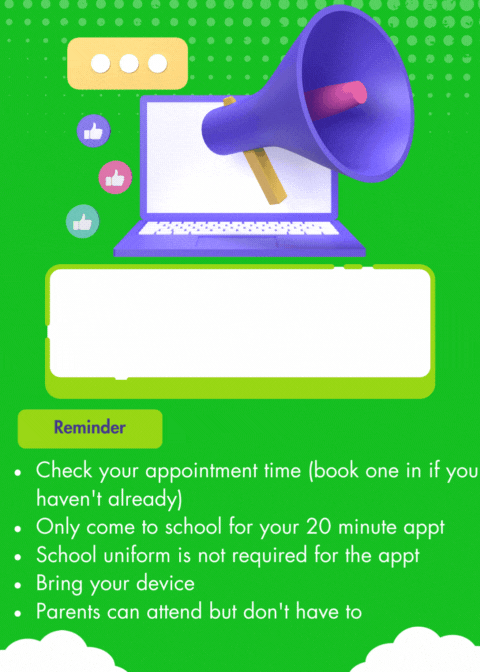
-
Opened: Monday, 2 September 2024, 8:30 AMDue: Monday, 23 September 2024, 12:00 PM
-
-
EXPLORE / TŪHURA learning intentions:
- We are EXPLORING number operations in context to support Stage One of our MHJC Numeracy Certificate.
- We are EXPLORING various sports fields, tracks, & sites of the Paris Olympics.
- We are CALCULATING distances, perimeters, areas, and volumes of various sports fields, tracks, & sites of Paris Olympics.
- We are CALCULATING and reading a scale and interpreting real-life distances.
- We are DISCOVERING different sports fields, tracks, and sites of the Olympics - shapes of the sub-parts.
• To design & construct an Olympic stadium or sports field, ensuring dimensions are calculated to scale.
Theme: Resilience/empowerment/perseverance
Whakatauki: "I orea te tuatara ka patu ki waho."
Metaphorical: A problem is solved by continuing to find solutions
Literal: This whakatauki refers to the need for creative thinking, adaptability and perseverance. In order to solve a problem you need to have all of these.Success Criteria: I can...
Mathematical Problem Solving
- Find distance, perimeter, area, and volume.
- Apply this knowledge in a real-life context, such as various sports fields, tracks, and sites of the Olympics.
- Read a scale and interpret real-life distances.
Class Activities: Assessment 2
Kia ora,
This week, we will focus on our Assessment 2.
Session 1: Assessment 2 - Introduction and related resources
Session 2: Assessment 2 - Continue.
Session 3: Assessment 2 - Continue1. Complete Numeracy Ninja Do Now challenge.
2. Record and underline the short date with a ruler and record the session's Learning Intention at the front of your maths exercise books. Please write in pencil, and rule/underline and mark with red pen.
3. After class discussion, complete the activity.Links:
Badminton Court
Basketball Court
Swimming Pool - 10 Lane
Eight Lane Swimming PoolFast finishers can work on their Maths Buddy reinforcement activities.
Homework:
Maths Buddy is your priority for your at-home practice. Please complete your set homework tasks by Friday at 9:30am (Forest's homework routine has now changed to 'Due on Fridays & re-issued on Fridays' to allow you more time). If you have completed your assigned activities please do extra practice on your 'Ludi' timetables programme and complete your Numeracy Certificate tasks.
Here's my suggestion re: how to effectively distribute your weekly homework responsibilities this week...
Mondays: 2 x Maths Buddy Tasks
Tuesdays: 2 x Maths Buddy Tasks
Wednesdays: 2 x Maths Buddy Tasks
Thursdays: 2 x Maths Buddy Task -

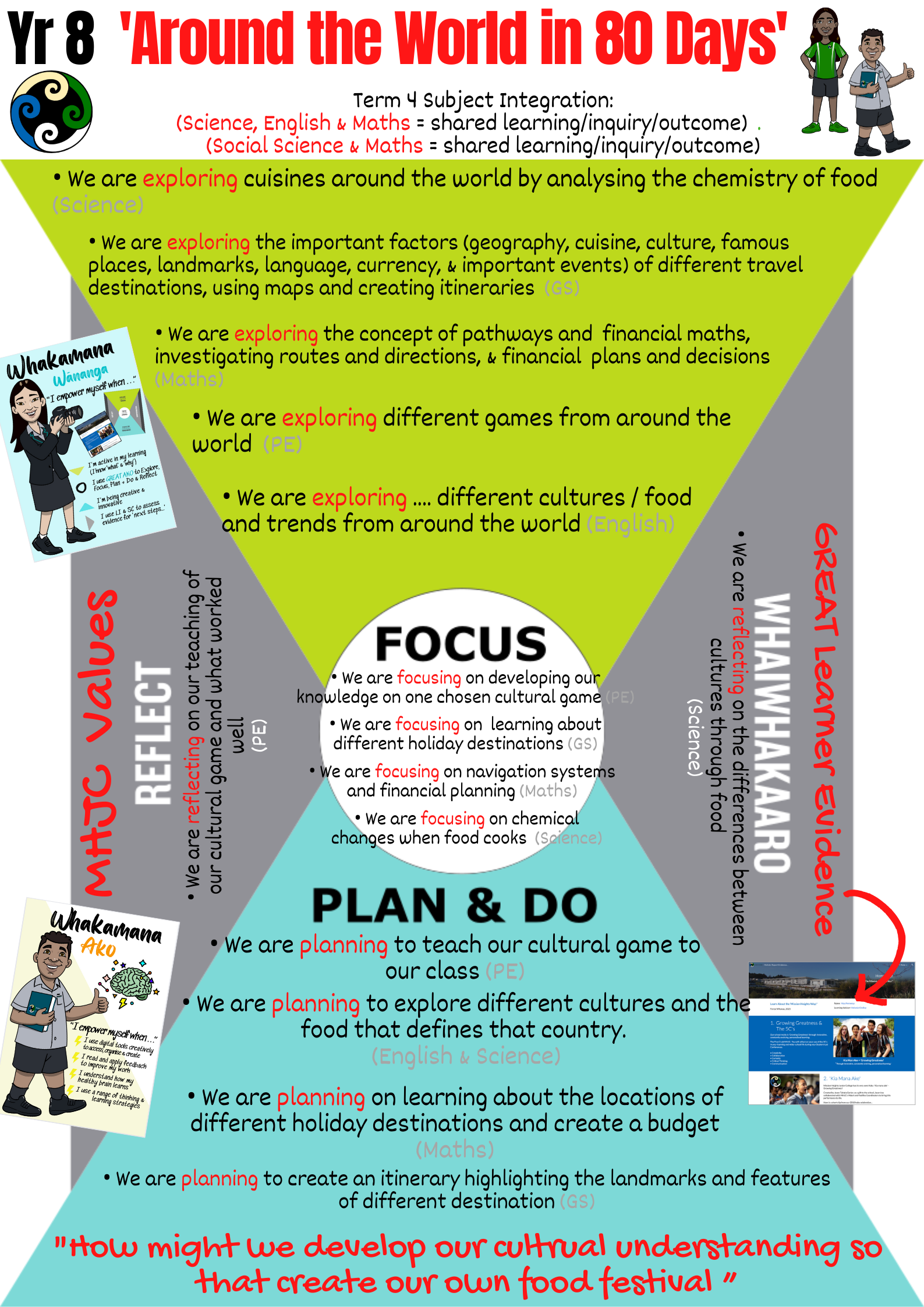
EXPLORE / TŪHURA learning intentions:
- We are EXPLORING how to interpret and communicate the location of positions and pathways using coordinates, angle measures, and the 8 main and halfway compass points
- We are EXPLORING to connect map scales to proportional reasoning, connect angles and using a protractor with compass point, investigate the most efficient route between two destinations.
- We are LEARNING to create and compare financial plans
- We are CALCULATING the percentage discounts
perseverance Whakatauki: "I orea te tuatara ka patu ki waho."
Metaphorical: A problem is solved by continuing to find solutions
Literal: This whakatauki refers to the need for creative thinking, adaptability and perseverance. In order to solve a problem you need to have all of these.Success Criteria: I can...- create and compare financial plans
- calculate percentage discounts
- use map scales, compass points, distance, and turn to interpret and communicate positions
- use pathways in coordinate systems and grid reference systems
Class Activities:
Session 1: Calculate and compare cost
Session 2: Bank Transaction and Overdraft
Session 3: Bank Transactions and OverdraftFast finishers can work on their Maths Buddy reinforcement activities.
Homework:
Maths Buddy is your priority for your at-home practice. Please complete your set homework tasks by Friday at 9:30am (Forest's homework routine has now changed to 'Due on Fridays & re-issued on Fridays' to allow you more time). If you have completed your assigned activities please do extra practice on your 'Ludi' timetables programme and complete your Numeracy Certificate tasks.
Here's my suggestion re: how to effectively distribute your weekly homework responsibilities this week...
Mondays: 2 x Maths Buddy Task
Tuesdays: 2 x Maths Buddy Task
Wednesdays: 2 x Maths Buddy Task
Thursdays: 2 x Maths BuddyTask -
EXPLORE / TŪHURA learning intentions:
- We are EXPLORING how to interpret and communicate the location of positions and pathways using coordinates, angle measures, and the 8 main and halfway compass points
- We are EXPLORING to connect map scales to proportional reasoning, connect angles and using a protractor with compass point, investigate the most efficient route between two destinations.
- We are LEARNING to create and compare financial plans
- We are CALCULATING the percentage discounts
- We are LEARNING about different aspects relating to money, such as bank transactions and buy now pay later.
• To design & construct an Olympic stadium or sports field, ensuring dimensions are calculated to scale.
Theme: Resilience/empowerment/perseverance
Whakatauki: "I orea te tuatara ka patu ki waho"
Metaphorical: A problem is solved by continuing to find solutions
Literal: This whakatauki refers to the need for creative thinking, adaptability and perseverance. In order to solve a problem you need to have all of these.Success Criteria: I can...- create and compare financial plans
- calculate percentage discounts
- use map scales, compass points, distance, and turn to interpret and communicate positions
- use pathways in coordinate systems and grid reference systems
- connect negative numbers with debt.
Class Activities:
Session 1: Buy now pay later
Session 2: Percentage discounts
Session 3: Percentage discounts - ExtendedFast finishers can work on their Maths Buddy reinforcement activities.
Homework:
Maths Buddy is your priority for your at-home practice. Please complete your set homework tasks by Friday at 9:30am (Forest's homework routine has now changed to 'Due on Fridays & re-issued on Fridays' to allow you more time). If you have completed your assigned activities please do extra practice on your 'Ludi' timetables programme and complete your Numeracy Certificate tasks.
Here's my suggestion re: how to effectively distribute your weekly homework responsibilities this week...
Mondays: 2 x Maths Buddy Task
Tuesdays: 2 x Maths Buddy Task
Wednesdays: 2 x Maths Buddy Task
Thursdays: 2 x Maths BuddyTask -
EXPLORE / TŪHURA learning intentions:
- We are EXPLORING how to interpret and communicate the location of positions and pathways using coordinates, angle measures, and the 8 main and halfway compass points
- We are EXPLORING to connect map scales to proportional reasoning, connect angles and using a protractor with compass point, investigate the most efficient route between two destinations.
- We are LEARNING to create and compare financial plans
- We are CALCULATING the percentage discounts
- We are LEARNING about differents aspects relating to money, such as bank transactions and buy now pay later.
Theme: Resilience/empowerment/perseverance
Whakatauki: "I orea te tuatara ka patu ki waho."
Metaphorical: A problem is solved by continuing to find solutions
Literal: This whakatauki refers to the need for creative thinking, adaptability and perseverance. In order to solve a problem you need to have all of these.Success Criteria: I can...
- create and compare financial plans
- calculate percentage discounts
- use map scales, compass points, distance, and turn to interpret and communicate positions
- use pathways in coordinate systems and grid reference systems
- connect negative numbers with debt.
Class Activities:
Session 1: Public Holiday
Session 2: Creating Budget
Session 3: AthleticsFast finishers can work on their Maths Buddy reinforcement activities.
Homework:
Maths Buddy is your priority for your at-home practice. Please complete your set homework tasks by Friday at 9:30am (Forest's homework routine has now changed to 'Due on Fridays & re-issued on Fridays' to allow you more time). If you have completed your assigned activities please do extra practice on your 'Ludi' timetables programme and complete your Numeracy Certificate tasks.
Here's my suggestion re: how to effectively distribute your weekly homework responsibilities this week...
Mondays: 2 x Maths Buddy Tasks
Tuesdays: 2 x Maths Buddy Tasks
Wednesdays: 2 x Maths Buddy Tasks
Thursdays: 2 x Maths Buddy Task -
EXPLORE / TŪHURA learning intentions:
- We are EXPLORING how to interpret and communicate the location of positions and pathways using coordinates, angle measures, and the 8 main and halfway compass points
- We are EXPLORING to connect map scales to proportional reasoning, connect angles and using a protractor with compass point, investigate the most efficient route between two destinations.
- We are LEARNING to create and compare financial plans
- We are CALCULATING the percentage discounts
- We are LEARNING about differents aspects relating to money, such as bank transactions and buy now pay later.
Theme: Resilience/empowerment/perseverance
Whakatauki: "I orea te tuatara ka patu ki waho."
Metaphorical: A problem is solved by continuing to find solutions
Literal: This whakatauki refers to the need for creative thinking, adaptability and perseverance. In order to solve a problem you need to have all of these.Success Criteria: I can...
- create and compare financial plans
- calculate percentage discounts
- use map scales, compass points, distance, and turn to interpret and communicate positions
- use pathways in coordinate systems and grid reference systems
- connect negative numbers with debt.
Class Activities:
Session 1: Scale - Find the Map Distance
Session 2: Scale - Investigation activity
Session 3: TimeFast finishers can work on their Maths Buddy reinforcement activities.
Homework:
Maths Buddy is your priority for your at-home practice. Please complete your set homework tasks by Friday at 9:30am (Forest's homework routine has now changed to 'Due on Fridays & re-issued on Fridays' to allow you more time). If you have completed your assigned activities please do extra practice on your 'Ludi' timetables programme and complete your Numeracy Certificate tasks.
Here's my suggestion re: how to effectively distribute your weekly homework responsibilities this week...
Mondays: 2 x Maths Buddy Tasks
Tuesdays: 2 x Maths Buddy Tasks
Wednesdays: 2 x Maths Buddy Tasks
Thursdays: 2 x Maths Buddy Tasks -
EXPLORE / TŪHURA learning intentions:
- We are EXPLORING how to interpret and communicate the location of positions and pathways using coordinates, angle measures, and the 8 main and halfway compass points
- We are EXPLORING to connect map scales to proportional reasoning, connect angles and using a protractor with compass point, investigate the most efficient route between two destinations.
- We are LEARNING to create and compare financial plans
- We are CALCULATING the percentage discounts
- We are LEARNING about differents aspects relating to money, such as bank transactions and buy now pay later.
Theme: Resilience/empowerment/perseverance
Whakatauki: "I orea te tuatara ka patu ki waho."
Metaphorical: A problem is solved by continuing to find solutions
Literal: This whakatauki refers to the need for creative thinking, adaptability and perseverance. In order to solve a problem you need to have all of these.Success Criteria: I can...
- create and compare financial plans
- calculate percentage discounts
- use map scales, compass points, distance, and turn to interpret and communicate positions
- use pathways in coordinate systems and grid reference systems
- connect negative numbers with debt.
Class Activities:
Session 1: Scale - Find Map Distance
Session 2: Scale - Investigation
Session 3: TimeFast finishers can work on their Maths Buddy reinforcement activities.
Homework:
Maths Buddy is your priority for your at-home practice. Please complete your set homework tasks by Friday at 9:30am (Forest's homework routine has now changed to 'Due on Fridays & re-issued on Fridays' to allow you more time). If you have completed your assigned activities please do extra practice on your 'Ludi' timetables programme and complete your Numeracy Certificate tasks.
Here's my suggestion re: how to effectively distribute your weekly homework responsibilities this week...
Mondays: 2 x Maths Buddy Tasks
Tuesdays: 2 x Maths Buddy Tasks
Wednesdays: 2 x Maths Buddy Tasks
Thursdays: 2 x Maths Buddy Tasks -
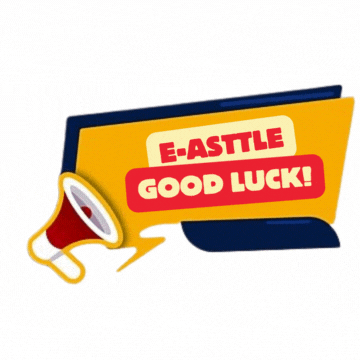
EXPLORE / TŪHURA learning intentions:
- We are EXPLORING how to interpret and communicate the location of positions and pathways using coordinates, angle measures, and the 8 main and halfway compass points
- We are EXPLORING to connect map scales to proportional reasoning, connect angles and using a protractor with compass point, investigate the most efficient route between two destinations.
- We are LEARNING to create and compare financial plans
- We are CALCULATING the percentage discounts
- We are LEARNING about differents aspects relating to money, such as bank transactions and buy now pay later.
Theme: Resilience/empowerment/perseverance Whakatauki: "I orea te tuatara ka patu ki waho."
Metaphorical: A problem is solved by continuing to find solutions
Literal: This whakatauki refers to the need for creative thinking, adaptability and perseverance. In order to solve a problem you need to have all of these.Success Criteria: I can...
- create and compare financial plans
- calculate percentage discounts
- use map scales, compass points, distance, and turn to interpret and communicate positions
- use pathways in coordinate systems and grid reference systems
- connect negative numbers with debt.
Class Activities:
Session 1: e-asTTle
Session 2: Time
Session 3: TimeFast finishers can work on their Maths Buddy reinforcement activities.
Homework:
Maths Buddy is your priority for your at-home practice. Please complete your set homework tasks by Friday at 9:30am (Forest's homework routine has now changed to 'Due on Fridays & re-issued on Fridays' to allow you more time). If you have completed your assigned activities please do extra practice on your 'Ludi' timetables programme and complete your Numeracy Certificate tasks.
Here's my suggestion re: how to effectively distribute your weekly homework responsibilities this week...
Mondays: 2 x Maths Buddy Tasks
Tuesdays: 2 x Maths Buddy Tasks
Wednesdays: 2 x Maths Buddy Tasks
Thursdays: 2 x Maths Buddy Task -
EXPLORE / TŪHURA learning intentions:
- We are EXPLORING how to interpret and communicate the location of positions and pathways using coordinates, angle measures, and the 8 main and halfway compass points
- We are EXPLORING to connect map scales to proportional reasoning, connect angles and using a protractor with compass point, investigate the most efficient route between two destinations.
- We are LEARNING to create and compare financial plans
- We are CALCULATING the percentage discounts
- We are LEARNING about differents aspects relating to money, such as bank transactions and buy now pay later.
Theme: Resilience/empowerment/perseverance
Whakatauki: "I orea te tuatara ka patu ki waho."
Metaphorical: A problem is solved by continuing to find solutions
Literal: This whakatauki refers to the need for creative thinking, adaptability and perseverance. In order to solve a problem you need to have all of these.Success Criteria: I can...
- create and compare financial plans
- calculate percentage discounts
- use map scales, compass points, distance, and turn to interpret and communicate positions
- use pathways in coordinate systems and grid reference systems
- connect negative numbers with debt.
Class Activities:
Session 1: Location - Grid References
Session 2: Location - Co-ordinates
Session 3: Location - Compass PointsFast finishers can work on their Maths Buddy reinforcement activities.
Homework:
Maths Buddy is your priority for your at-home practice. Please complete your set homework tasks by Friday at 9:30am (Forest's homework routine has now changed to 'Due on Fridays & re-issued on Fridays' to allow you more time). If you have completed your assigned activities please do extra practice on your 'Ludi' timetables programme and complete your Numeracy Certificate tasks.
Here's my suggestion re: how to effectively distribute your weekly homework responsibilities this week...
Mondays: 2 x Maths Buddy Tasks
Tuesdays: 2 x Maths Buddy Tasks
Wednesdays: 2 x Maths Buddy Tasks
Thursdays: 2 x Maths Buddy Task -
EXPLORE / TŪHURA learning intentions:
- We are EXPLORING how to interpret and communicate the location of positions and pathways using coordinates, angle measures, and the 8 main and halfway compass points
- We are EXPLORING to connect map scales to proportional reasoning, connect angles and using a protractor with compass point, investigate the most efficient route between two destinations.
- We are LEARNING to create and compare financial plans
- We are CALCULATING the percentage discounts
- We are LEARNING about differents aspects relating to money, such as bank transactions and buy now pay later.
Theme: Resilience/empowerment/perseverance
Whakatauki: "I orea te tuatara ka patu ki waho."
Metaphorical: A problem is solved by continuing to find solutions
Literal: This whakatauki refers to the need for creative thinking, adaptability and perseverance. In order to solve a problem you need to have all of these.Success Criteria: I can...
- create and compare financial plans
- calculate percentage discounts
- use map scales, compass points, distance, and turn to interpret and communicate positions
- use pathways in coordinate systems and grid reference systems
- connect negative numbers with debt.
Class Activities:
Session 1: Location - Bearing Measured From North
Session 2: Creating Pathways - Loci
Session 3: Location Co-ordinatesDo Now
Fast finishers can work on their Maths Buddy reinforcement activities.
Homework:
Maths Buddy is your priority for your at-home practice. Please complete your set homework tasks by Friday at 9:30am (Forest's homework routine has now changed to 'Due on Fridays & re-issued on Fridays' to allow you more time). If you have completed your assigned activities please do extra practice on your 'Ludi' timetables programme and complete your Numeracy Certificate tasks.
Here's my suggestion re: how to effectively distribute your weekly homework responsibilities this week...
Mondays: 2 x Maths Buddy Tasks and 1 x See Reader
Tuesdays: 2 x Maths Buddy Tasks and 1 x See Reader
Wednesdays: 2 x Maths Buddy Tasks, 1 x See Reader during Wananga Wednesday and 1 x iBalance plus 1 x Read Around at home
Thursdays: 2 x Maths Buddy Task, 1 x See Reader





